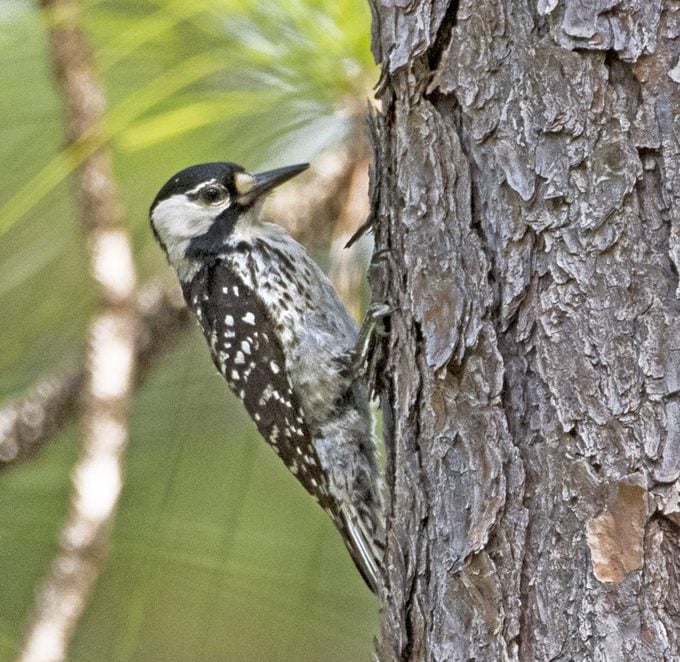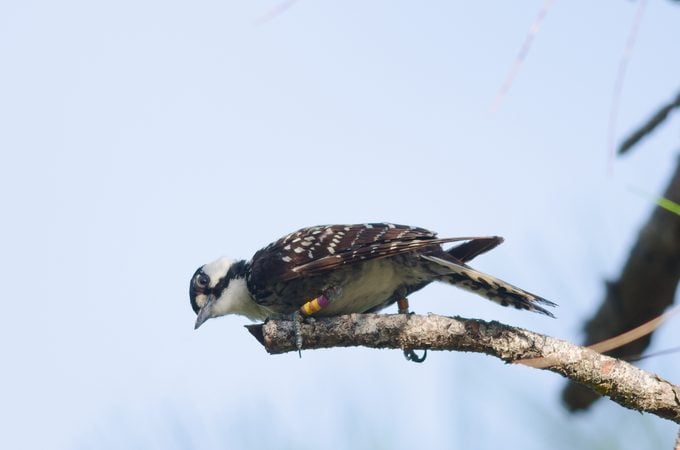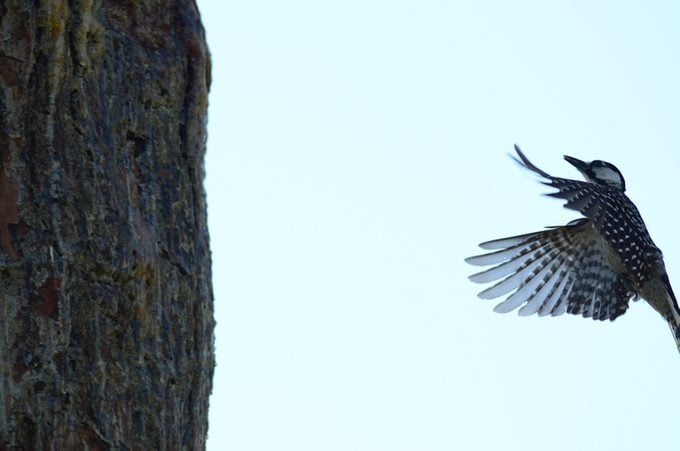How to Identify a Rare Red-Cockaded Woodpecker
Updated: Sep. 29, 2023
If you've spotted an unusual woodpecker in a southeastern pine forest, it might just be a red-cockaded woodpecker! Learn more about this endangered bird.

Unless you spend a lot of time in the old growth pine forests of the southeast, you’re unlikely to stumble upon a red-cockaded woodpecker (Dryobates borealis) by accident. These unique little woodpeckers don’t visit backyard feeders, and rarely stray far from their beloved forests. Pine trees provide food, nesting habitat, and shelter all in one for this bird, so if you want to see one, you’ll have to seek them out.
Downy vs hairy woodpecker: how to tell the difference.
Range and Habitat

For hundreds of years, the southeastern U.S. was dominated by stands of longleaf pines. They grew in forests with very little understory, their long slim trunks stretching straight and high into an unobstructed sky. Red-cockaded woodpeckers became the specialists of these forests, using the pines for nesting sites and digging into the bark for a bug buffet.
Today, many of these longleaf pine forests have been commercially logged and cleared to make way for development. As their habitat dwindled, so did the numbers of red-cockaded woodpeckers. They’ve been listed as federally endangered since 1970. But where southeastern pine forests stands still linger, so do these uncommon birds. Protected lands like wildlife refuges and national forests offer your best shot for finding them, from Virginia south to Florida and west to eastern Texas.
Discover more types of woodpeckers birders should know.
What Does a Red-Cockaded Woodpecker Look Like?

Like so many birds, the red-cockaded woodpecker’s name is a little misleading. The red cockade itself is often very hard to spot, tucked away on the male’s upper cheek border. Instead, look for a black-and-white ladder striped back, with a solid black cap and neck stripe that encircle large white cheek patches.
In terms of size, red-cockaded woodpeckers are similar to robins, measuring around 8 to 9 inches long with a 14 inch wingspan and a short straight bill.
Learn how to identify a ladder-backed woodpecker.
Call and Sounds
These birds like to forage in groups, and can be pretty vocal while they do. Listen for a scratchy sklit when they’re disturbed, or their soft drumming on tree trunks.
Find out why woodpeckers peck and how to stop it.
What Do Red-Cockaded Woodpeckers Eat?
Bugs, bugs, bugs! The soft bark plates of pine are easy for this woodpecker to loosen. Then, they dig underneath with their tongues, seeking out ants, termites, beetles, wood roaches, and more. Males forage higher on the trees, while females stick to the trunk below the lowest branches. From time to time red-cockaded woodpeckers feed on native berries, and may occasionally forage in cornfields too.
Meet the sapsucker birds: woodpeckers with a sweet tooth.
Nesting Habits

These unusual birds live in family groups of two to five adults, only one of which is female. The breeding pair in the group is monogamous, usually mating for life. The other birds help raise the young, bringing food and defending them from intruders.
The breeding male carefully chooses a pine tree for his nest site (they won’t use nesting boxes), often seeking out trees that have been infected with red heart fungus. This makes the wood softer and easier to excavate. He digs out a large cavity that extends both upward and downward, giving the birds more places to retreat if intruders come calling. These woodpeckers also gouge small holes around the entrance to the cavity, encouraging sticky sap to flow. This discourages potential predators.
It can take up to two years to completely excavate one nesting cavity, which is often used for decades by a family group. Some nesting sites are well-known to the birding community, and visiting one safely and respectfully can offer a good chance to add this rare woodpecker to your life list.
Next, dig into mind-blowing facts about woodpeckers every birder should know.




















